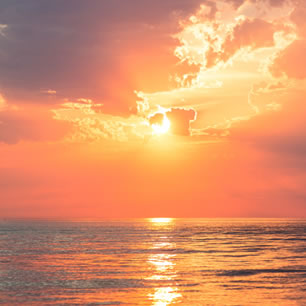
Eugenie Clark Obituary
New York City, New York, United States
May 04, 1922 - February 25, 2015

Eugenie Clark Obituary
May 04, 1922 - Feb 25, 2015
'Shark Lady,' Famed Marine Biologist
A pioneer in marine conservation and the study of shark behavior, Clark helped the public understand and appreciate the much maligned species.
Eugenie Clark, an American marine biologist who fell in love with sharks as a child with her nose pressed against an aquarium tank—and whose research on the much maligned species earned her the nickname "Shark Lady"—died Wednesday morning in Sarasota, Florida. She was 92.
The death was confirmed by National Geographic photographer David Doubilet, her colleague and friend.
A pioneer in the use of scuba gear to conduct underwater scientific research and a veteran of more than 70 deep dives in submersibles, Clark continued diving into her nineties, even after being diagnosed with non-smoking-related lung cancer.
"She never outgrew this absolute fascination of looking and seeing and observing under water," saidDoubilet, an underwater photographer who swam beside Clark for the majority of the dozen National Geographic magazine stories she wrote. "Even when I was a younger man and she was older, I couldn't keep up with her. She moved with a kind of liquid speed underwater."
Before Clark began her research on sharks in the 1950s, the animals were considered both dumb and deadly. "After some study," she said, "I began to realize that these 'gangsters of the deep' had gotten a bad rap."
Although she would conduct research on other fish—she discovered several species and had some named in her honor—much of her work was focused on sharks and dispelling the public's fears about them, especially after the 1975 movie Jaws. One of her National Geographicstories was titled, "Sharks: Magnificent and Misunderstood."
Clark discovered the first effective shark repellent in secretions from a flatfish called Moses sole that lives in the Red Sea. She ventured into undersea caverns off Mexico's Yucatán Peninsula to find "sleeping sharks" suspended in the water, a discovery that upended scientists' belief that sharks had to keep moving to breathe.
"Her contributions were astounding," Doubilet said.
Eugenie Clark was born in New York City on May 4, 1922, to a Japanese mother and an American father who died when she was a baby. Her mother later married a Japanese restaurant owner, and Clark would credit the ocean-focused Japanese culture for her life's passion.
She learned to swim before the age of two, and later often told the story of how she got hooked on fish. On Saturdays when she was nine, she would visit the New York Aquarium at Battery Park in lower Manhattan. She would imagine what it would be like to be inside the shark tank swimming with them.
Clark pursued her dream to be an ocean explorer, earning a B.A. in zoology from Hunter College in 1942 and a master's and Ph.D. from New York University. She had hoped to attend Columbia University, her first choice for postdoctoral studies, but a scientist there told her, "If you do finish, you will probably get married, have a bunch of kids, and never do anything in science after we have invested our time and money in you."
But despite marrying—five times—and having four children with her second husband, Clark proved that skeptic wrong.
Few women, let alone Japanese Americans, were working in the male-dominated field of marine biology when she started out after World War II. Clark and another early underwater explorer, Sylvia Earle, would become role models and mentors to a generation of women marine biologists.
After graduate research in the South Pacific—her 1953 autobiography about her experience, Lady With a Spear, became an international bestseller—Clark took a job at the Scripps Institution of Oceanographyin La Jolla, California. It was a memorable stay. Scripps was where she learned to scuba dive. But it was also where she nearly drowned while diving with a helmet whose air hose malfunctioned. And it was where she encountered more institutional sexism; she and another woman researcher were barred from going on overnight trips or to the Galápagos Islands, drastically limiting the scope of their work.
Clark did stints at the New York Zoological Society (now the Wildlife Conservation Society) and the American Museum of Natural Historybefore moving to southwest Florida in 1955 and founding the Cape Haze Marine Laboratory in Sarasota. It was later renamed Mote Marine Laboratory and eventually expanded its initial focus on sharks to include wild fisheries, coral reef restoration, marine biomedical research, and other issues.
"For a young woman at that time to take on something like this and move to this mosquito-infested place, that was really gutsy," said Kumar Mahadevan, former president of the Mote lab.
In 1968, Clark joined the faculty of the University of Maryland, where she taught marine biology until her retirement in 1992. She stayed connected with Mote, spending her later years there as a trustee.
Although Clark was a serious researcher who developed the first "test-tube babies" in female fish, her "ability to connect to the general public and talk about the importance of exploration and protection of oceans and conservation of species" may be her greatest legacy, Mahadevan said.
Clark, who received more than a dozen grants from the National Geographic Society, made several TV specials for the Society as well. She also famously taught then Crown Prince Akihito of Japan how to snorkel.
But perhaps Clark will be most remembered for a courage driven by curiosity.
Doubilet was with Clark in the Sea of Cortez when she rode the back of a 50-foot whale shark, the largest fish in the sea. He thought he would never see her again.
She later called the ride one of the most exciting journeys of her career.
Andrea Stone
PUBLISHED FEBRUARY 25, 2015





Guestbook